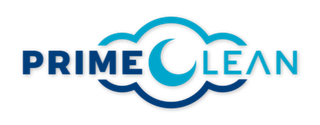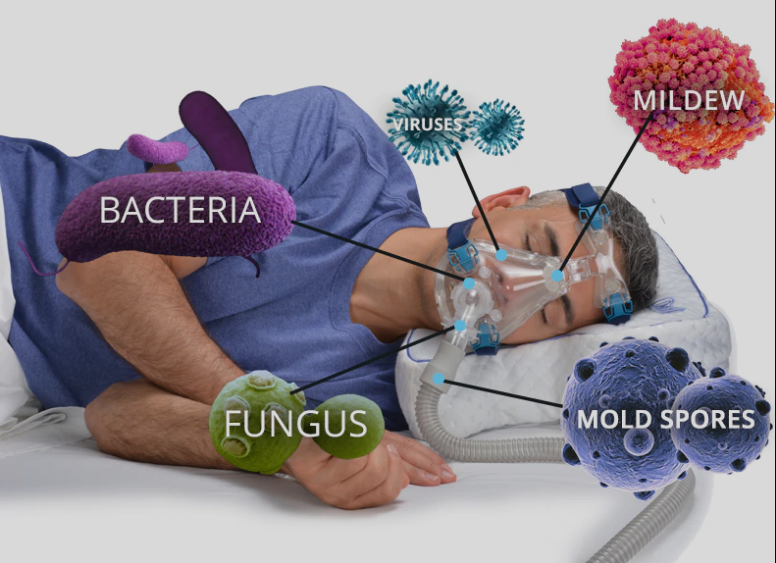Positive Airway Pressure (PAP) Machines and Accessories
Nov 03, 2021 by PrimeClean
CPAP, APAP, Bi-PAP, CPAP Cleaner...New to sleep apnea world? All you need to know about Positive Air Pressure (PAP) therapy machines and accessories, summed up in this one article. Five minutes read, for lifelong knowledge!
Sleep Apnea And Therapy
Sleep apnea (or apnoea)is always defined as a sleep disorder (somnipathy), and more precisely a sleep disorder in which pauses in breathing or periods of shallow breathing during sleep occur more often than normal (as defined by National Heart, Lung and Blood Institute).This breathing pause happens when the air inflow is obstructed,partially or fully, either by blocking the upper airways (obstructive sleep apnea or OSA) or when the brain fails to send signals to the muscles that control breathing, which cause the breathing process to stop (central sleep apnea or CSA).
One of the most successful and used treatments for sleep apnea is using Positive Airway Pressure machines (PAP machines) during the sleep process. Positive airway pressure (PAP) is a term used to describe a mode of respiratory ventilation used in medicine and the treatment of sleep apnea.
If PAP sounds familiar, the term you probably heard more often is CPAP, possibly Bi-PAP or APAP. Positive airway pressure itself is only a method of providing therapy for sleep apnea…but the machines used for it are often divided into 3 main categories: CPAP, Bi-PAP, APAP.
CPAP vs. Bi-PAP vs. APAP
As mentioned, positive airway pressure machines are mainly divided into 3 categories: CPAP, Bi-PAP, and APAP. All PAP machines come with three main parts: a motor, a hose, and a mask. Let’s see what makes them different…
CPAP – Continuous Positive Airway Pressure therapy was developed by Dr. Colin Sullivan in 1980. and since then it has proven to be overall the best solution for sleep apnea. As the name suggests, the machine uses continuous airflow pressure (prescribed by a doctor) to keep the upper airways constantly opened i.e. unobstructed. CPAP machine, as well as BiPAP and APAP) is mainly used for obstructive sleep apnea therapy (which is also the most common type of apnea according to the American Academy of Sleep Medicine). CPAP machine is the most common PAP machine used in sleep apnea therapy, as it is simple and highly efficient, but also because it is a more budget-friendly solution than other PAP therapies (more insurance providers cover CPAP devices than other solutions)
BiPAP (or BPAP) – Bilevel Positive Airway Pressure therapy is the upgraded version of the CPAP machine. Instead of keeping the constant positive air pressure, BiPAP has 2 air pressure phases: low and high air pressure. One pressure level for inhalation (IPAP), and other, a lower pressure, for exhalation (EPAP). This helps making the whole breathing process a bit easier for some people who find the constant same level air pressure uncomfortable. It is also used more often in more severe types of sleep apnea.
APAP – Automatic Positive Airway Pressure therapy, similar to CPAP and BiPAP, provides breathing support with positive air pressure. What makes them different, and possibly more advanced, the solution is air pressure setting. APAP machines have high and low air pressure settings which are automatically adjusted according to patient’s breathing. The self-adjusting feature of APAP machines can be especially useful if a patient has an allergy or a respiratory infection that causes airways to behave differently than usual.
Do note that before using any of the PAP machines, a patient must consult a medical professional for advice and proper therapy! Although the APAP machine is self-adjusting and as such it can be used without setting initial air pressure, it is still not advisable to use it before consulting a medical professional.
Best Brands
When talking about PAP machines, 2 companies are the top choice, ResMed and Phillips Respironics.
The history of ResMed is linked to the beginnings of CPAP therapy… Baxter International was the first company that licensed Dr. Sullivan’s CPAP patent and developed a commercial CPAP machine, released in 1988. After that, the company ResCare acquired Baxter International, and in 1995. changed the name to ResMed. With the wide variety of products and PAP machines, it is easily the most influential company in the sleep apnea therapy industry.
Phillips Respironics is part of the huge Phillips family. Focused on sleep apnea therapy, it is offering high quality and familiar brand name. As their main competitor, they also offer a wide variety of products for different needs and occasions.
Even though there are quite a few companies by now that produce PAP machines, it is very few that can be named next to ResMed and Phillips Respironics…but there are a few good manufacturers worth mentioning: Somnetics, Fisher & Paykel, DeVilbiss, Apex Medical…
Maintenance Of PAP Machines
With their simple design and use, PAP machines require very little maintenance.
As mentioned before, every PAP machine contains 3 main parts: a motor (the machine itself), a hose, and a mask. Other parts are air filter(s), humidifier, mask straps, tube connectors (some of the other parts might not be listed with all machines, but mostly it is the 4 we mentioned).
Most PAP machines, from the certified manufacturers, come with the 2-5 years warranty for the machine (motor and electronics), while hose/tubing, mask, filters, should be changed on a monthly or yearly basis and are considered as expendable parts. While it mostly depends on the manufacturer, in general mask and tubing should be replaced on yearly basis, while the filters on every 3-6 months (depending on the filter).
Sanitizing And Cleaning
Another part of maintenance is sanitizing and cleaning the parts. While the machine is only cleaned by removing dust with the cloth and replacing filters, tubing and the mask should be cleaned on daily basis! Keep in mind that the air you breathe is as clean as your CPAP equipment. There are two ways to clean your CPAP equipment manually and with a CPAP cleaner (sanitizer).
Another option is using CPAP cleaner. There are a lot of available options on the market, with different cleaning solutions (UV light, Ozone…). The cleaner that proved most efficient and easy to use is CPAP Cleaner based on ozone (O3) as a disinfecting agent. While most brand-name CPAP cleaners with ozone sanitizing technology should be considered safe and recommendable for daily use, we recommend PrimeClean® CPAP Cleaner, as an example of the high quality, brand name, CPAP cleaner. PrimeClean CPAP Cleaner is designed to safely use ozone in a cleaning bag, rather than sending it directly out into the room. And since CPAP equipment should be cleaned and sanitized daily, the use of cleaner is the most efficient solution since the process of sanitizing lasts only 30 minutes and is very simple (just put all the CPAP parts in the sanitizing bag, plug the cleaner machine to the bag, and click the start button).
To Sum Up
Positive Airway Pressure therapy is the non-invasive, affordable, and effective solution for obstructive sleep apnea (OSA). For this therapy patients can use CPAP, BiPAP, or APAP machine; selection mostly depends on affordability and need. All types of PAP machines use similar technology and differences aside, they all need regular maintenance, as well as sanitizing and cleaning (if not kept clean and sanitized they can do more harm than help).
If it looks too bulky with tubing, or mask and straps make you feel uncomfortable, there are different solutions for that…from different mask types, different mask stripes and holders, to simple strap covers, special CPAP pillows that follow the shape of mask… In the end, it all comes down to staying healthy and making life with sleep apnea as easy as can be.






